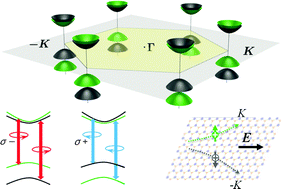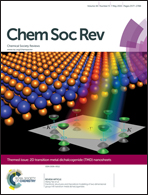Electronic structures and theoretical modelling of two-dimensional group-VIB transition metal dichalcogenides
Abstract
Atomically thin group-VIB transition metal dichalcogenides (TMDs) have recently emerged as a new class of two-dimensional (2D) semiconductors with extraordinary properties including the direct band gap in the visible frequency range, the pronounced spin–orbit coupling, the ultra-strong Coulomb interaction, and the rich physics associated with the valley degree of freedom. These 2D TMDs exhibit great potential for device applications and have attracted vast interest for the exploration of new physics. 2D TMDs have complex electronic structures which underlie their physical properties. Here we review the bulk electronic structures of these new 2D materials as well as the theoretical models developed at different levels, along which we sort out the understanding of the origins of a variety of properties observed or predicted.

- This article is part of the themed collection: 2D Transition Metal Dichalcogenide (TMD) Nanosheets

 Please wait while we load your content...
Please wait while we load your content...